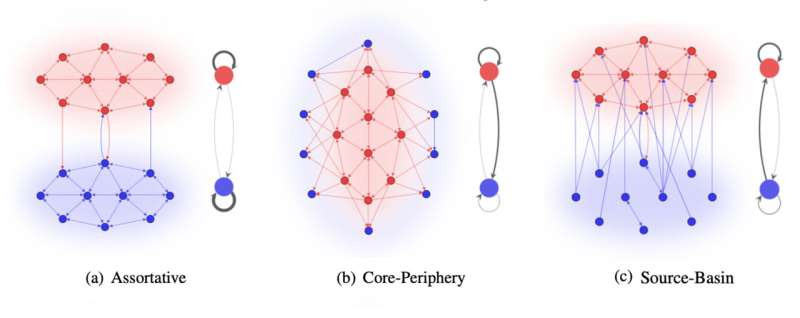This article has been reviewed according to Science X's editorial process and policies. Editors have highlighted the following attributes while ensuring the content's credibility:
fact-checked
peer-reviewed publication
trusted source
proofread
Researchers discover hidden structure in networks like Twitter

Researchers at the University of Sydney have discovered new structural relationships in complex networks, such as X (formerly Twitter) and political blogs, that could help explain the digital flow of information.
Their research published in the journal PNAS Nexus introduces a new method capable of identifying and classifying relationships in networks. They found unexplored types of relationships in almost all of the 53 networks they analyzed.
The study represents a significant advance in understanding complex networks and their scaffolding, while the methodology has the potential to change the way networks are analyzed and interpreted.
The research was led by Ph.D. student Cathy Liu and co-authored by Professor Eduardo Goldani Altmann, both from the School of Mathematics and Statistics, and Associate Professor Tristram Alexander from the School of Physics. All three are members of the Center for Complex Systems.
One new relationship that the researchers call a "source-basin" structure plays an important role in two online networks the team closely examined—a new network of Twitter users and a well-studied network of political blogs.
"This structure organizes the flow of information in online social networks, which happens from a community of sparsely connected influential nodes—the source—to a community of densely inter-connected active nodes—the basin," Professor Altmann said.
"An example of source-basin organization would be 'influencers,' such as news agencies, acting as the source with regular users performing the role of the basin.
"The influencers compete with each other and therefore don't engage one another, while regular users are engaged by the influencers and also connected to each other, such as through retweeting."
Associate Professor Alexander said it is helpful to think of a network like a city with different neighborhoods, each with its own distinct character and social dynamics. The researchers' method allowed them to identify and classify all possible relationships between these neighborhoods, from close-knit communities to more diffuse and diverse networks.
A social media platform like Twitter or a network of blogs are considered complex networks because they involve many interconnected nodes (such as users or accounts) and relationships (like connections, interactions or links) between these nodes.
"Networks are a powerful mathematical representation of various datasets and systems. An important computational tool to study and extract information from large complex networks is to partition it into groups of nodes with similar connectivity," lead author Liu said.
"The surprising finding for the blog network suggests that the source blogs, being heavily referenced, are not tightly connected with each other while receiver blogs are less referenced but highly active in referencing others and strongly connected with each other.
"Our research presents a new way of studying network organization and, at this stage, we can only speculate on the why and what their effects are on social media, but our plan for the future is to go deeper into this question."
More information: Cathy Xuanchi Liu et al, Nonassortative relationships between groups of nodes are typical in complex networks, PNAS Nexus (2023). DOI: 10.1093/pnasnexus/pgad364





















